#Kaeng Krachan Elephant Park
Explore tagged Tumblr posts
Photo










World Elephant Day
These magnificent creatures are among the largest animals on earth, with incredible memories and emotional intelligence that astound researchers and animal lovers alike.
They’re intelligent. They’re family-oriented. They have great memories. They are capable of feeling a wide range of deep emotions, from intense grief to joy bordering on elation, as well as empathy and stunning self-awareness. They create complex, supportive societies much like our own.
Taking into consideration all of that and much, much more, what’s not to love about elephants? Still, countless elephants are brutally killed every year for their ivory by greedy poachers who then leave their carcasses to rot in the sun. As Graydon Carter, Editor of Vanity Fair put it:
We admire elephants in part because they demonstrate what we consider the finest human traits, but the way we treat them puts on display the very worst of human behavior.
World Elephant Day is the perfect time to find out more about these amazing animals and what we can do to preserve and protect them so they do not go the way of the mammoth.
History of World Elephant Day
World Elephant Day was created in 2011 by two Canadian filmmaker Patricia Sims and Thailand’s Elephant Reintroduction Foundation and first celebrated on August 12, 2012. The initiative was greatly supported by film star and Star Trek legend William Shatner who narrated the documentary Return to the Forest, a fascinating 30-minute film about the reintroduction of captive Asian elephants to the wild.
The motivation for the first World Elephant Day was to draw attention to the plight of these majestic creatures to populations and cultures all over the world. Due to their pleasant and intelligent nature, the world’s largest land animals are loved worldwide. But, unfortunately, these magnificent creatures face multiple threats to their survival.
One major issue is the ivory trade. Currently, the demand for ivory is the biggest in China, with the price of ivory often exceeding the price of gold, something that makes elephants bigger targets than ever. The economics here work firmly against the humble elephant. Extreme levels of poverty in Africa mean that people can often make a month’s wages or more from the ivory of a single animal, selling it on the international market.
Furthermore, the parts of the world that demand ivory, such as China, are becoming increasingly wealthy, meaning that they can pay more for tusks. These dual factors are combining to make elephant poaching one of the most lucrative activities on the plant.
Habitation loss is also a danger to the world’s elephant population as it deprives elephants of the hundreds of pounds of food they need every day, making it more difficult for them to breed and making it easier for poachers to track them down. Unfortunately, researchers believe that loss of habitat is the primary driver for the loss of elephants in the wild. A century ago, they numbered more than 12 million in the wild. Today, that figure may be as low as 400,000, with as many as 20,000 per year killed by poachers.
Data suggest that the geographic range of elephants fell by around 30 percent between 2002 and 2011, with a similar loss of savannah for them to roam. The introduction of large parks throughout Africa has allowed habitat destruction to stabilize, but illegal poaching remains a dire threat. Circuses and tourism are also serious problems for the animals’ well-being.
World Elephant Day is an opportunity for everyone to get together to find ways to reduce conflict between humans and elephants. The solution probably lies in a combination of strategies. These could include land development that minimizes habitat destruction, electric fences to keep elephants away from farms, and changes in local attitudes.
Luckily, an increasing number of both celebrities and politicians have become interested in the cause, including Leonardo DiCaprio, Ashley Judd, and President Barack Obama.
World Elephant Day Timeline
50 million BC Elephants roam Africa
The elephant species is believed to have originated in Africa and then eventually spread across land bridges to Asia and Europe.
2012 World Elephant Day is founded
Canadian Patricia Sims and the Elephant Reintroduction Foundation of Thailand, which is a royal initiative in Thailand. The day continues to be led by Patricia Sims.
19th-20th Centuries Elephant populations are reduced
The number of elephants decreases, even with international efforts to protect them.
1976 African Elephants are placed on the Endangered Species list
The growing popularity of ivory leads to a severe decrease in populations and elephants are considered endangered as poachers continue to kill them for their tusks.
2015 World Elephant Society is started
Founded as a charitable organization, World Elephant Society was created to help support the World Elephant Day campaign.
How to Celebrate World Elephant Day
The best way to celebrate this day is to take the opportunity to educate yourself about these magnificent mammals and share your knowledge with others. As ever, simply spreading the word about the dangers these magnificent mammals face via social media can actually make a real change.
Thanks to your sharing a few of World Elephant Day’s Facebook posts, that old high school acquaintance of yours who is traveling to Thailand on her honeymoon this year may just decide to skip the elephant ride when she realizes that “training” elephants often involves tying and beating them daily for months on end.
Watching the aforementioned documentary will only take half an hour of your time but is sure to be a real eye-opener, not to mention the absolutely stunning landscapes shown in it. If you want to get a bit more involved, you could choose to make a donation to a foundation dedicated to protecting elephants from poachers or relocating them to locations better suited to their needs.
The organizers of World Elephant Day also provide plenty of ideas they encourage for helping these incredible creatures in the wild.
The first thing you can do is sign the World Elephant Day pledge. This document allows you to join with countless other people around the world to put pressure on governments to change their policies.
Organizers also want people to promote ethical elephant hashtags on their social media accounts, raising awareness of the abuse of animals worldwide, including in the tourism industry.
Clearly, buying any products containing ivory is a big no-no and should be avoided wherever possible. When buying pianos, antiques, or other products, always check to ensure that the manufacturer has not used elephant tusks in the production process.
You can also support organizations working hard to protect natural elephant habitats. Many of these areas are under threat right now because of population pressures in sub-Saharan African countries as well as India, where cities are sprawling and booming.
Finally, you can invest in projects that seek to provide sustainable and lucrative livelihoods to people who live alongside elephants. These programs improve economic circumstances so that locals don’t feel that they need to poach to make ends meet.
Whichever way suits you best, make sure that you spend this day in a way that helps elephants the world over so we, in turn, can continue to marvel at them and their uniquely fascinating way of life. By playing your part, you can make a big difference.
World Elephant Day FAQs
When is World Elephant Day?
World Elephant Day takes place on August 12 of each year. Other celebration days for elephants include Save the Elephant Day on April 16 and National Elephant Appreciation Day on September 22.
How is World Elephant Day celebrated?
One of the best ways to celebrate World Elephant Day is to help elephants by raising awareness, learning more about elephants, or signing the World Elephant Day Pledge.
Are elephants endangered?
The elephant species is classified as endangered, with only 40,000-50,000 left in the wild.
Why is World Elephant Day celebrated?
World Elephant Day is observed to bring attention to the plight of Asian and African elephants, conserving and protecting them from the numerous threats they face.
How much does an elephant weigh?
As the largest land animals on earth, a large male elephant can weigh up to 15,000 pounds.
Source
#Asian elephant#Zoo Zürich#Zurich#animal#original photography#daytrip#Kaeng Krachan Elefantenpark#Kaeng Krachan Elephant Park#spring 2018#2017#Schweiz#Switzerland#World Elephant Day#WorldElephantDay#flora#fauna#eating#tourist attraction#landmark#indoors#architecture
2 notes
·
View notes
Photo

Kaeng Krachan Elephant Park by rolandkunz
0 notes
Photo

Kui Buri National Park, Prachuab Khiri Khan - A bit south of Kaeng Krachan is Kui Buri National Park known for being the home of many near-extinct wildlife - gaurs, elephants, white-handed gibbon, leopard, Malayan tapir, and Asiatic wild dog. Apart from the guided wildlife watching, visitors can perhaps take parts in reforestation activities such as making salt licks for animals, building stream-slowing dams, and planting wild grasses.
8 notes
·
View notes
Note
Hey Archy, love the blog. Do you know any good zoo architecture?
Thanks!
Here are some examples of zoo architecture:

Kaeng Krachan Elephant Park at Zoo ZurichMarkus Schietsch Architekten

Petting ZooKresings Architektur

Elephant House at Copenhagen Zoo Foster + Partners

Savannehuis LAM Architects

Giraffe House at Auckland Zoo Monk Mackenzie and Glamuzina Patterson

Aviary in the Bois de la Bâtie Public ParkGroup8 with Guscetti & Tournier structural engineering
286 notes
·
View notes
Text
Hua Hin Tour Package
The most troubled situation comes in your life when you come to the Thailand City but due to some reason, you could not able to see all the best attractions of this city. In that case, you have to choose the preferred locations of this island and believe us Hua Hin is the perfect place to hangout with your friends, family and loved once. Some of the best places would make you happy and blessed in this location such as:
Romantic Summer Palace
Hua Hin’s famous 1920s railway station,
Elephant camp
Kaeng Krachan National Park,
Everyone do some unique activities when they are out of their comfort zone. People want to perform some activities which makes them happy and fill them with a positive energy. There are also numerous activities which makes this place number one in the list of attractions:
Snorkeling
Mountain
Trekking
Kayak adventures
World-class golf estates
After reading all those attractive activities, your heart is also bouncing to enjoy some beautiful moments in the Hua Hin island. For making this dream a reality, you have to get in touch with the experts of Parbhat Travels. A team has so many experts who offers you the best tour package for Hua Hin at very affordable rates. Parbhat Travels has all kind of tour packages which suits your budget and make you happy. We offers honeymoon tour package, Family tour package and friends tour package at very affordable amount for all users. So lets pack your bag and come to this beautiful island for spending some amazing days in this destination with your family and loved once. Just dial our helpline number and we will surely help you with the further information.
0 notes
Photo

New Post has been published on https://vacationsoup.com/top-small-towns-and-villages-in-thailand/
Uncovering Top Small Towns and Villages in Thailand Unknown To Most
When people think of Thailand, they usually paint their imagination with long, powdery beaches, historic temples, cotton roses, and feast on tom yum soup. Undoubtedly, all these are inviting symbols of the country for tourists all around the world. But there are many lesser-known and less-visited, but top small towns and villages in Thailand that will show you the “ethnic Thailand.”
To inspire you for a memorable and a soulful trip to Thailand, we have put together a list of the most scenic, visit-worthy hidden gems in Thailand. We bet you will not find these places on most itineraries.
Chiang Khong
Mekong water in Chiang Khong, Image source: https://c1.staticflickr.com/9/8059/8247189330_61e17f2ed4_b.jpg
This small riverside village is settled across the swirling Mekong waters from the Lao town of Huay Xai. It has a popular Friday market, lots of temples, and gorgeous sceneries painted by nature. If you are looking to explore Thailand’s top towns and villages, you must head to Chiang Khong.
Take a walk or cycle to the nearby Hmong village and waterfall. The track is a bit rough and steep; so better leave your motorbike or cycle and do the last stretch to the waterfall on foot for a pleasant hike. If you are looking for top small towns and villages in Thailand, head to Chiang Khong village.
Essential Information
Getting around: You can see the riverfront area on foot and get a tuk-tuk or taxi for the trip out to the bus station. Rent a bike or motorbike to visit local villages and drive along Mekong banks.
Major attractions: Wat Luang, the 4th Thai–Lao friendship bridge, Rin bar, Wat Phra Kaew and Ang Kep Nam Huai Chang
Ban Bo Luang
Houses in Ban Bo Luang, Image source: http://www.hotelroomsearch.net/im/city/ban-bo-luang-thailand-3.jpg
Ban Bo Luang is a picturesque village that is located over 100 km in the north of the eponymous provincial capital. Nestled between two mountainous national parks and Lao border, the village has long been linked with the salt extraction from local salt walls. That’s why it’s also known as the Salt Well village, one of Thailand’s top villages.
There are many natural places to explore in Ban Bo Luang. Visit Doi Phu Kha National Park to see some of the areas’ highest peaks while Khun Nan national park boasts a trail culminating in a dramatic lookout over Laos.
Important Information
Getting around: To reach Ban Bo Luang, take a bus from Nan to Pua. Arrive at 7-Eleven and take the thrice-daily taxi that that terminates the village.
Things to do in Ban Bo Luang: Swim in the Mekong River, try Khao Soi Pa Orn – traditional soupy noodles, visit a Buddhist temple
Ban Na Ton Chan
Sukhothai historical park, Image source: https://www.nationalgeographic.com/content/dam/travel/rights-exempt/Travel-2016/thailand/article-2/sukhothai-historical-park-sukhothai-thailand.jpg
This beautiful village is one of the hidden small villages of Thailand, located in north-central Thailand. You will see spiky red and green dragon fruits dropping from trees outside homes.
Local wisdom and passion are the charms of this village. Over 20 years, the village has created a fascinating history of local traditions and won many awards for its community-based activities.
Essential Information:
Things to do: try weaving, biking on the streets, feast on Khao mao – a traditional sticky Thai dessert
Mon Cham
Mon Cham village, Thailand, Image source: http://www.easydaythailand.com/wp-content/uploads/2016/05/Chiang-Mai-Mon-Cham-campsite.jpg
Located an hour away from Chiang Mai, Mon Cham is a mountain farming community with amazing, sprawling flower fields. The local hillside tribe produces a variety of flowers using sustainable farming methods. They also produce cooler-weather veggies and fruits.
The flowers keep the hill cherry, colorful and tended while creating panoramic stretches across the village. Walk through the flower fields or visit the mountain-side café for a meal and experience an uninterrupted beauty of nature.
Essential Information
Address: Tambon Mae Raem, Amphoe Mae Rim, Chang Wat, Chiang Mai
Best time to visit: From October to February and the best mode of travel is a car.
Chiang Dao
Wat Tham pha Plong temple, Image source: http://media1.trover.com/T/53cdc126d6bdd45c9200006c/fixedw_large_4x.jpg
Settled in Thailand’s mighty limestone mountains in the north, Chiang Dao is where expats come to escape from the crowd and noise of city life. One of the best things to do in this small town is climbing Doi Chiang Dao, which is Thailand’s third largest peak.
A 90-minute natural trail leads to famous Chiang Dao caves. Bamboo rafting is another amazing fun thing to do in Chiang Dao. Spirituality seekers should head to Wat Tham Pha Plong and less-visited, but gorgeous Golden Temple for stunning views around the town.
Essential Information
Other Things to do: trekking, rafting, soak in Pong Arng hot springs, visiting waterfalls.
Getting there: Take a bus from Chiang Mai, Hwy 107 runs 72 km north to Chiang Dao and then on to Fang and Thaton. The nearest major airport and railway station are in Chiang Mai. You can also rent a metered, air-conditioned taxi one-way.
Trang
Boating in Trang, Image source: https://dynaimage.cdn.cnn.com/cnn/q_auto,w_1024,c_fill,g_auto,h_576,ar_16:9/http%3A%2F%2Fcdn.cnn.com%2Fcnnnext%2Fdam%2Fassets%2F150717133549-islands-of-trang–libong-trang.jpg
Looking for hidden small towns and villages of Thailand? The province of Trang has made its place in our list due to its amazing mountainous interior, lush parks, and pristine and unspoiled beaches. Since not too visitors visit this gorgeous town, it’s undoubtedly one of the best hidden gems in Thailand.
Spend a day or two to explore this ‘real Thai town’ and local culture at their best. Explore wet and dry markets, visit the Clock tower, and local festivals in the town.
Essential Information
Things to do: Visit nearby islands for an exciting snorkeling trip, explore Had Chao Mai National Park othe n bike, enjoy nature at Khao Chong Wildlife and Conversation Centre
Getting there: Local buses run between Trang and Phuket, Krabi and even Surat Thani. Trains also run from Bangkok and other major cities to Trang.
Rangong
Boats at a beach in Rangong, Image source: https://back-tourcameleo.orchestra-platform.com/admin/TS/fckUserFiles/Image/TRAVELTEAM/THAILANDE/PHUKET.jpg
Rangong is one of the top small towns and villages in Thailand. Rangong is a small border city with fewer crowds of tourists and hence maintains a quaintly Thai atmosphere.
Some of the most popular attractions of this town are bald hill, hot springs, Rangong canyon, and natural waterfalls. Moreover, Rangong’s off-shore islands also set spectacular scenes, especially Koh Phayam and Kam Islands.
Essential Information
Things to do: Shop at Rangong’s bubbly day market or sizzle up mouth-watering Thai dishes at the night market. Some other must-see places are Rattanarangsan Palace, Ngao Waterfall National Park and Punyaban Waterfall.
How to get there: Take a bus from Chumphon’s central bus terminal to reach Rangong. The Songteow is the best mode to get around this small town.
Phetchaburi
Cave in Phetchaburi, Image source: http://www.datofarm.com/pics/Thailand.jpg
The scenic town of Phetchaburi is known for its long sandy beaches and mesmerizing natural beauty. Meaning “city of diamonds”, Phetchaburi will keep you busy enjoying no matter how long you’re staying for.
The main beach destinations in the town are Cha Am, Hat Puek Tian and Hat Chao Samran. The city is also rich in culture and history. You can explore beautiful caves, ancient temples and royal palaces in the town.
Essential Information
Other major attractions: Wat Mahathat Worawihan temple, spectacular murals of Wat Yai Suwannaram, Kaeng Krachan National Park, Mrigadayavan Palace
Getting there: You can travel this town by train or bus from Bangkok, which takes around 4 hours to reach Phetchaburi.
Surat Thani
Surat Thani town in Thailand, Image source: http://travelneu.com/o/Surat-Thani-o13.jpg
This small town is known as the “city of good people”, which is surrounded by tasty southern street food and colorful Chinese temples and Chinese shopfronts.
One of the most popular islands in Surat Thani is Koh Pha-Ngan. The island is famous for swimming, snorkeling, diving, and peacefully listening to sound of waves. Khao Tha Phet Wildlife and 210-meter above the sea level Nature Education Station are some of the city’s top views.
Essential Information
Things to do: nature walk, diving, city walk, feasting on seafood
Getting there: Air-conditioned buses run between Surat Thani and Krabi, Phuket and Hat Yai. Surat Thani International Airport is around 30 kilometres from the city by road.
Kanchanaburi
Death Railway in Kanchanaburi, Image source: http://static.asiawebdirect.com/m/phuket/portals/thaiwave-com/homepage/kanchanaburi/attractions/pagePropertiesImage/kanchanaburi_attractions.jpg.jpg
Nestled in western Thailand, Kanchanaburi is a perfect place for travelers of all kinds, from history buffs to nature lovers. This is one of the must-visit top small towns and villages in Thailand.
The major attractions of the town are Kwai drift, Hellfire Pass memorial museum, Elephant’s World, Erawan National Park, Srinakarin National Park, and Wat Tham Sua.
Essential Information
Other things to try: Restaurants in Kanchanaburi serve popular traditional dishes like tom yum, sticky mango rice and much more. You must get into water sports and boat tours in Kanchanaburi.
Getting there: Bangkok and neighboring provinces are connected to Kanchanaburi by daily rail and bus services. There are trains from Bangkok Noi railway station two times a day for Kanchanaburi.
So, if you are planning a trip to Thailand, make sure you include these Thailand’s top towns and villages in your itinerary.
#and villages#hidden gems in Thailand#hidden small towns and villages of Thailand#Thailand's top towns#top small towns and villages in Thailand
0 notes
Text
Twelve days old!
Imagine you are a twelve-days old Baby Elephant at the new Kaeng Krachan Elephant Park at the Zurich Zoo …
“I have on idea what the fuss is all about? …
… I live in this cool place at the Zurich Zoo …
… and they all treat me like I am royalty or something …
… check out all these people, and just for me! …
… that trunk thing is already working :-) – took me a few days to figure it out …
… my mum…
View On WordPress
0 notes
Text
























National Elephant Appreciation Day
Take a trip to the zoo or a wildlife conservatory or fire up Disney’s Dumbo and appreciate one of Earth’s largest, most interesting creatures: the elephant.
Many annual celebration days have a long, storied history and carry huge global significance. Is National Elephant Appreciation Day one of them? Perhaps not, but that doesn’t mean that it is any less important for the ones who the day is about – and in this case, it’s all about the elephants!
History of National Elephant Appreciation Day
Established in 1996 by Mission Media, a graphics and publishing company, the origins of National Elephant Appreciation Day are largely based on owner Wayne Hepburn’s personal fascination with elephants. His interest, in turn, began when he received an elephant paperweight as a gift from his daughter. Despite its somewhat ridiculous back story, the day has received some official recognition over the years.
That said, while native to Asia and Africa, elephants are certainly worthy of some appreciation from everyone around the world. They are, after all, the largest land mammals on the planet and sadly, many species of elephants face the threat of extinction, due to environmental factors as well as the ivory trade.
Those who love elephants and want other opportunities throughout the year to celebrate these incredible creatures can also observe World Elephant Day in August or Save the Elephant Day in April.
How to Celebrate National Elephant Appreciation Day
So what should you do to celebrate National Elephant Appreciation Day? Well, just about anything elephant-themed. Get on board with observing by implementing ideas such as some of these:
Visit Some Elephants at the Zoo
An amazing way to show appreciation for this largest of land mammals might be to head over to a local zoo and pay them a visit on National Elephant Appreciation Day. Check the zoo’s website ahead of time to see if they publish a list of feeding times, as that is a particularly fun hour to view the elephants during their meals. Many zoos throughout the United States, and in countries all over the world, offer access for children and adults to experience elephants in a safe and calm environment.
Learn Fun Facts About Elephants
Finding out more about elephants can be a superb opportunity to celebrate National Elephant Appreciation Day. Try out some of these fun facts to learn, share and raise awareness for the day:
Elephants are able to distinguish languages Researchers believe that they can tell the difference between the languages of people groups who prey on them and those who do not.
Elephants are amazing hearers Even though their ears are enormous, another way that elephants can “hear” is using their feet, by picking up low frequency sounds through the ground.
Elephants can experience trauma Just like humans, elephants are highly emotional and intelligent creatures, and they can also show signs of PTSD when they have experienced a tragedy.
Elephants need their trunks to survive The trunk of an elephant is extremely versatile, allowing them to not only smell but also breathe underwater, pick up items, clean themselves, make sounds and even provide a defense for themselves.
Make a Donation to Help Elephants
Those who are concerned about the dwindling populations and the way this could affect the plight of these amazing animals might want to make a donation to a favorite wildlife charity that is dedicated to helping elephants. From protecting their habitat to legislating better laws to prevent poaching, many charities do all sorts of work to take care of elephants.
Take a look at some of these nonprofit organizations that help elephants:
World Wildlife Fund. This well-known organization offers the opportunity for patrons to “adopt” an elephant.
International Elephant Foundation. This charity provides protection, medical care, conservation partnerships and more.
Save the Elephants. This UK registered charity is based in Kenya where many of the world’s elephants live.
Elephants Alive. Specifically targeted toward helping the elephants who live in Africa, this nonprofit organization allows patrons to participate in a program where they become an “elephant guardian”.
Source
#Asian elephant#Zoo Zürich#Zurich#original photography#Kaeng Krachan Elefantenpark#Kaeng Krachan Elephant Park#spring 2018#2017#Schweiz#Switzerland#World Elephant Day#WorldElephantDay#flora#fauna#eating#tourist attraction#landmark#indoors#architecture#National Elephant Appreciation Day#NationalElephantAppreciationDay#22 September#Kaeng Krachan Elenfantenpark#summer 2018
1 note
·
View note
Text

















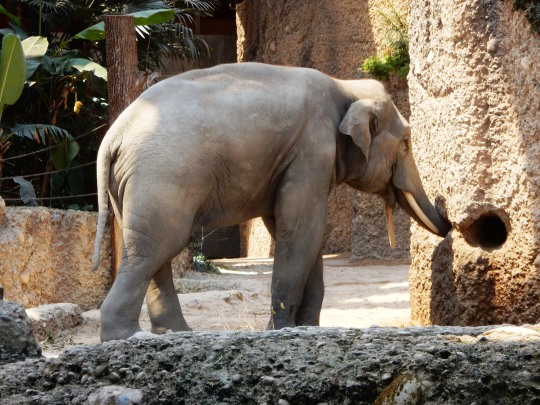






World Elephant Day
These magnificent creatures are among the largest animals on earth, with incredible memories and emotional intelligence that astound researchers and animal lovers alike.
They’re intelligent. They’re family-oriented. They have great memories. They are capable of feeling a wide range of deep emotions, from intense grief to joy bordering on elation, as well as empathy and stunning self-awareness. They create complex, supportive societies much like our own.
Taking into consideration all of that and much, much more, what’s not to love about elephants? Still, countless elephants are brutally killed every year for their ivory by greedy poachers who then leave their carcasses to rot in the sun. As Graydon Carter, Editor of Vanity Fair put it:
We admire elephants in part because they demonstrate what we consider the finest human traits, but the way we treat them puts on display the very worst of human behavior.
World Elephant Day is the perfect time to find out more about these amazing animals and what we can do to preserve and protect them so they do not go the way of the mammoth.
History of World Elephant Day
World Elephant Day was created in 2011 by two Canadian filmmaker Patricia Sims and Thailand’s Elephant Reintroduction Foundation and first celebrated on August 12, 2012. The initiative was greatly supported by film star and Star Trek legend William Shatner who narrated the documentary Return to the Forest, a fascinating 30-minute film about the reintroduction of captive Asian elephants to the wild.
The motivation for the first World Elephant Day was to draw attention to the plight of these majestic creatures to populations and cultures all over the world. Due to their pleasant and intelligent nature, the world’s largest land animals are loved worldwide. But, unfortunately, these magnificent creatures face multiple threats to their survival.
One major issue is the ivory trade. Currently, the demand for ivory is the biggest in China, with the price of ivory often exceeding the price of gold, something that makes elephants bigger targets than ever. The economics here work firmly against the humble elephant. Extreme levels of poverty in Africa mean that people can often make a month’s wages or more from the ivory of a single animal, selling it on the international market.
Furthermore, the parts of the world that demand ivory, such as China, are becoming increasingly wealthy, meaning that they can pay more for tusks. These dual factors are combining to make elephant poaching one of the most lucrative activities on the plant.
Habitation loss is also a danger to the world’s elephant population as it deprives elephants of the hundreds of pounds of food they need every day, making it more difficult for them to breed and making it easier for poachers to track them down. Unfortunately, researchers believe that loss of habitat is the primary driver for the loss of elephants in the wild. A century ago, they numbered more than 12 million in the wild. Today, that figure may be as low as 400,000, with as many as 20,000 per year killed by poachers.
Data suggest that the geographic range of elephants fell by around 30 percent between 2002 and 2011, with a similar loss of savannah for them to roam. The introduction of large parks throughout Africa has allowed habitat destruction to stabilize, but illegal poaching remains a dire threat. Circuses and tourism are also serious problems for the animals’ well-being.
World Elephant Day is an opportunity for everyone to get together to find ways to reduce conflict between humans and elephants. The solution probably lies in a combination of strategies. These could include land development that minimizes habitat destruction, electric fences to keep elephants away from farms, and changes in local attitudes.
Luckily, an increasing number of both celebrities and politicians have become interested in the cause, including Leonardo DiCaprio, Ashley Judd, and President Barack Obama.
World Elephant Day Timeline
50 million BC Elephants roam Africa
The elephant species is believed to have originated in Africa and then eventually spread across land bridges to Asia and Europe.
2012 World Elephant Day is founded
Canadian Patricia Sims and the Elephant Reintroduction Foundation of Thailand, which is a royal initiative in Thailand. The day continues to be led by Patricia Sims.
19th-20th Centuries Elephant populations are reduced
The number of elephants decreases, even with international efforts to protect them.
1976 African Elephants are placed on the Endangered Species list
The growing popularity of ivory leads to a severe decrease in populations and elephants are considered endangered as poachers continue to kill them for their tusks.
2015 World Elephant Society is started
Founded as a charitable organization, World Elephant Society was created to help support the World Elephant Day campaign.
How to Celebrate World Elephant Day
The best way to celebrate this day is to take the opportunity to educate yourself about these magnificent mammals and share your knowledge with others. As ever, simply spreading the word about the dangers these magnificent mammals face via social media can actually make a real change.
Thanks to your sharing a few of World Elephant Day’s Facebook posts, that old high school acquaintance of yours who is traveling to Thailand on her honeymoon this year may just decide to skip the elephant ride when she realizes that “training” elephants often involves tying and beating them daily for months on end.
Watching the aforementioned documentary will only take half an hour of your time but is sure to be a real eye-opener, not to mention the absolutely stunning landscapes shown in it. If you want to get a bit more involved, you could choose to make a donation to a foundation dedicated to protecting elephants from poachers or relocating them to locations better suited to their needs.
The organizers of World Elephant Day also provide plenty of ideas they encourage for helping these incredible creatures in the wild.
The first thing you can do is sign the World Elephant Day pledge. This document allows you to join with countless other people around the world to put pressure on governments to change their policies.
Organizers also want people to promote ethical elephant hashtags on their social media accounts, raising awareness of the abuse of animals worldwide, including in the tourism industry.
Clearly, buying any products containing ivory is a big no-no and should be avoided wherever possible. When buying pianos, antiques, or other products, always check to ensure that the manufacturer has not used elephant tusks in the production process.
You can also support organizations working hard to protect natural elephant habitats. Many of these areas are under threat right now because of population pressures in sub-Saharan African countries as well as India, where cities are sprawling and booming.
Finally, you can invest in projects that seek to provide sustainable and lucrative livelihoods to people who live alongside elephants. These programs improve economic circumstances so that locals don’t feel that they need to poach to make ends meet.
Whichever way suits you best, make sure that you spend this day in a way that helps elephants the world over so we, in turn, can continue to marvel at them and their uniquely fascinating way of life. By playing your part, you can make a big difference.
World Elephant Day FAQs
When is World Elephant Day?
World Elephant Day takes place on August 12 of each year. Other celebration days for elephants include Save the Elephant Day on April 16 and National Elephant Appreciation Day on September 22.
How is World Elephant Day celebrated?
One of the best ways to celebrate World Elephant Day is to help elephants by raising awareness, learning more about elephants, or signing the World Elephant Day Pledge.
Are elephants endangered?
The elephant species is classified as endangered, with only 40,000-50,000 left in the wild.
Why is World Elephant Day celebrated?
World Elephant Day is observed to bring attention to the plight of Asian and African elephants, conserving and protecting them from the numerous threats they face.
How much does an elephant weigh?
As the largest land animals on earth, a large male elephant can weigh up to 15,000 pounds.
Source
#Asian elephant#Zoo Zürich#Zurich#animal#original photography#daytrip#Kaeng Krachan Elefantenpark#Kaeng Krachan Elephant Park#spring 2018#2017#Schweiz#Switzerland#World Elephant Day#WorldElephantDay#flora#fauna#eating#tourist attraction#landmark#indoors#architecture#cityscape
1 note
·
View note
Text




















Save The Elephant Day
Volunteer or donate to Save an Elephant, and help preserve these majestic, intelligent, and of course giant threatened creatures that shape our ecosystems.
Elephants are known as the most enormous land animal and a surprisingly gentle giant in the animal kingdom. Emotional, intelligent and beautiful in the wild, sadly elephant populations have been rapidly decreasing due to various threats, perhaps most significantly poaching.
Save The Elephant Day aims to change this alarming trend by educating people about elephants and the plights they face, encouraging everyone to do their bit and help save them from extinction.
A brief education in elephants
There are currently three species of elephant spread across Africa and Asia: the African bush elephant, the African forest elephant and the Asian elephant. Characterized by their enormous size and highly adept trunks, these creatures are intelligent, social and largely gentle giants. They’ve been shown to display a range of emotions such as joy, anger and grief and live in complex social structures – matriarchal herds for the female cows and calves and a solitary lifestyle or bachelor herds for the male bulls.
Elephants are highly communicative animals, producing various noises including infrasonic, creating seismic vibrations over long distances and greeting each other through touch. Their impressive trunks provide them with an excellent sense of smell, a handy snorkel when swimming and even a delicate nutcracker.
History of Save The Elephant Day
Elephants are what is known as a keystone species due to their effect on their environment and the flora and fauna around them. Their size and strength allow them to shape the habitats they live in, for example by digging new watering holes. They are also vital for spreading seeds, facilitating the reproduction of various plant and tree species.
They have also long been valued in human culture, admired for their wisdom, strength and sociable natures. They have commonly featured in architecture, whether engravings on cave walls, sculptures in Buddhist temples or stone carvings on Gothic churches. They have also been revered in various world religions, believed to house the souls of ancestors and linked with thunder and lightning, for example. Perhaps the best-known example is the Hindu god Ganesha, who is depicted as having the head of an elephant.
Elephants are frequently used as working animals in Asia, with people drawing on their incredible strength to carry heavy loads in construction projects or provide a mode of transport. In ancient times they were even used in various wars.
Yet despite our affinity with and indebtedness to these amazing animals, our treatment of them has sadly led to a decline in numbers and a proliferation of abused and exploited elephants. The main culprit in population decline is the ivory trade – although it has largely been banned since the late 1980s, illegal poaching continues to this day, with one African elephant killed every 30 minutes for its tusks.
Other threats to the elephant include habitat loss and fragmentation, usually caused by increased urbanization, and conflicts with humans over crops. There are also numerous instances of maltreated and neglected elephants in captivity, for example those used in circuses or as tourist attractions.
Sadly, African bush elephants and Asian elephants are both listed as an endangered species by the International Union for Conservation of Nature (IUCN), while African forest elephants are classed as critically endangered, with their population rapidly declining.
While these facts are certainly sobering, all hope is not lost! Various organizations are working hard to increase the number of wild elephants and to rehabilitate those rescued from unpleasant circumstances. And real change is possible – lobbying efforts recently induced China, previously the biggest ivory market globally, to ban the trade in 2018, helping reduce the threat to elephants.
To celebrate Save The Elephant Day, people learn about the awesome elephant and make an effort to improve the worrying statistics regarding their numbers by donating to conservation organizations. Together we can work to protect these precious creatures, and that’s what Save The Elephant Day is all about!
How to celebrate Save The Elephant Day
One of the best ways to celebrate Save The Elephant Day is to support or even volunteer for an organization that focuses its efforts on the conservation of these creatures, for example by helping to prevent poachers from killing elephants for their ivory tusks. Organizations such as the World Wide Fund for Nature (WWF), Fauna & Flora International (FFI) and the Elephant Crisis Fund (ECF) do a great job protecting these creatures and there are plenty of ways you can get involved, for example by adopting an elephant for yourself or a loved one.
You can even save up some money and take a trip to an animal sanctuary that cares for elephants. These projects can help with the rehabilitation of abused animals that have been rescued from exploitation, as well as with the housing of wild elephants that are sick or orphaned. You could also go and see some elephants in the wild by visiting Africa or Asia.
Save The Elephant Day is all about raising awareness, so take the time to learn more about these creatures by researching facts about the elephant, and then take an active effort in educating other people. For example, you could post flyers, share information on social media and show your support for the elephant through events and fundraisers.
There are plenty of ways you could help raise funds for elephant conservation. How about a themed bake sale or a ‘pin the tail on the elephant’ contest? Why not try auctioning off some elephant artwork or other memorabilia? Or you could organize an ‘elephant walk’ and compete to see who can plod their way the farthest!Whatever you do to celebrate, be sure to share this important day with your friends, family neighbors and colleagues and help save the elephants together!
Source
#Kaeng Krachan Elefantenpark#Zoo Zürich#Kaeng Krachan elephant park#daytrip#original photography#Asian Elephant#Elephas maximus#Zurich#Schweiz#Switzerland#indoors#animal#Save the Elephant Day#SaveTheElephantDay#16 April#tourist attraction#landmark#spring 2017#2018#flora#eating#fauna#architecture
0 notes
Photo










Save The Elephant Day
Volunteer or donate to Save an Elephant, and help preserve these majestic, intelligent, and of course giant threatened creatures that shape our ecosystems.
Elephants are known as the most enormous land animal and a surprisingly gentle giant in the animal kingdom. Emotional, intelligent and beautiful in the wild, sadly elephant populations have been rapidly decreasing due to various threats, perhaps most significantly poaching.
Save The Elephant Day aims to change this alarming trend by educating people about elephants and the plights they face, encouraging everyone to do their bit and help save them from extinction.
A brief education in elephants
There are currently three species of elephant spread across Africa and Asia: the African bush elephant, the African forest elephant and the Asian elephant. Characterized by their enormous size and highly adept trunks, these creatures are intelligent, social and largely gentle giants. They’ve been shown to display a range of emotions such as joy, anger and grief and live in complex social structures – matriarchal herds for the female cows and calves and a solitary lifestyle or bachelor herds for the male bulls.
Elephants are highly communicative animals, producing various noises including infrasonic, creating seismic vibrations over long distances and greeting each other through touch. Their impressive trunks provide them with an excellent sense of smell, a handy snorkel when swimming and even a delicate nutcracker.
History of Save The Elephant Day
Elephants are what is known as a keystone species due to their effect on their environment and the flora and fauna around them. Their size and strength allow them to shape the habitats they live in, for example by digging new watering holes. They are also vital for spreading seeds, facilitating the reproduction of various plant and tree species.
They have also long been valued in human culture, admired for their wisdom, strength and sociable natures. They have commonly featured in architecture, whether engravings on cave walls, sculptures in Buddhist temples or stone carvings on Gothic churches. They have also been revered in various world religions, believed to house the souls of ancestors and linked with thunder and lightning, for example. Perhaps the best-known example is the Hindu god Ganesha, who is depicted as having the head of an elephant.
Elephants are frequently used as working animals in Asia, with people drawing on their incredible strength to carry heavy loads in construction projects or provide a mode of transport. In ancient times they were even used in various wars.
Yet despite our affinity with and indebtedness to these amazing animals, our treatment of them has sadly led to a decline in numbers and a proliferation of abused and exploited elephants. The main culprit in population decline is the ivory trade – although it has largely been banned since the late 1980s, illegal poaching continues to this day, with one African elephant killed every 30 minutes for its tusks.
Other threats to the elephant include habitat loss and fragmentation, usually caused by increased urbanization, and conflicts with humans over crops. There are also numerous instances of maltreated and neglected elephants in captivity, for example those used in circuses or as tourist attractions.
Sadly, African bush elephants and Asian elephants are both listed as an endangered species by the International Union for Conservation of Nature (IUCN), while African forest elephants are classed as critically endangered, with their population rapidly declining.
While these facts are certainly sobering, all hope is not lost! Various organizations are working hard to increase the number of wild elephants and to rehabilitate those rescued from unpleasant circumstances. And real change is possible – lobbying efforts recently induced China, previously the biggest ivory market globally, to ban the trade in 2018, helping reduce the threat to elephants.
To celebrate Save The Elephant Day, people learn about the awesome elephant and make an effort to improve the worrying statistics regarding their numbers by donating to conservation organizations. Together we can work to protect these precious creatures, and that’s what Save The Elephant Day is all about!
How to celebrate Save The Elephant Day
One of the best ways to celebrate Save The Elephant Day is to support or even volunteer for an organization that focuses its efforts on the conservation of these creatures, for example by helping to prevent poachers from killing elephants for their ivory tusks. Organizations such as the World Wide Fund for Nature (WWF), Fauna & Flora International (FFI) and the Elephant Crisis Fund (ECF) do a great job protecting these creatures and there are plenty of ways you can get involved, for example by adopting an elephant for yourself or a loved one.
You can even save up some money and take a trip to an animal sanctuary that cares for elephants. These projects can help with the rehabilitation of abused animals that have been rescued from exploitation, as well as with the housing of wild elephants that are sick or orphaned. You could also go and see some elephants in the wild by visiting Africa or Asia.
Save The Elephant Day is all about raising awareness, so take the time to learn more about these creatures by researching facts about the elephant, and then take an active effort in educating other people. For example, you could post flyers, share information on social media and show your support for the elephant through events and fundraisers.
There are plenty of ways you could help raise funds for elephant conservation. How about a themed bake sale or a ‘pin the tail on the elephant’ contest? Why not try auctioning off some elephant artwork or other memorabilia? Or you could organize an ‘elephant walk’ and compete to see who can plod their way the farthest!Whatever you do to celebrate, be sure to share this important day with your friends, family neighbors and colleagues and help save the elephants together!
Source
#Asiatic elephant#Asian elephant#Kaeng Krachan Elephant Park#Zoo Zürich#Zurich#spring 2017#daytrip#original photography#Save The Elephant Day#15 April#indoors#tourist attraction#landmark#animal#Schweiz#Switzerland#SaveTheElephantDay#flora#fauna#eating
1 note
·
View note
Photo


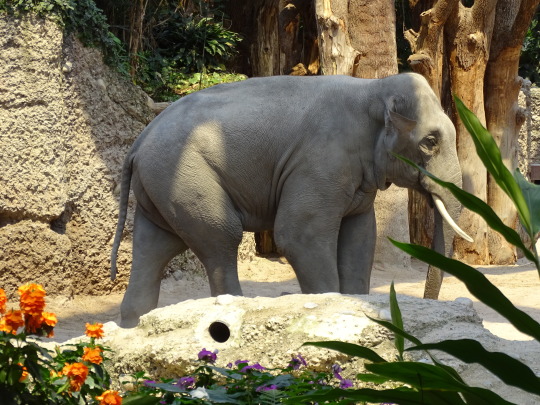
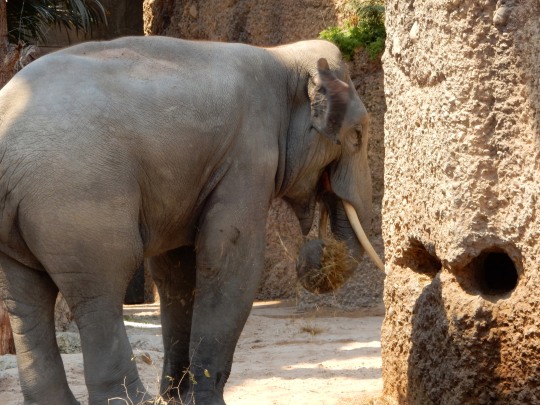
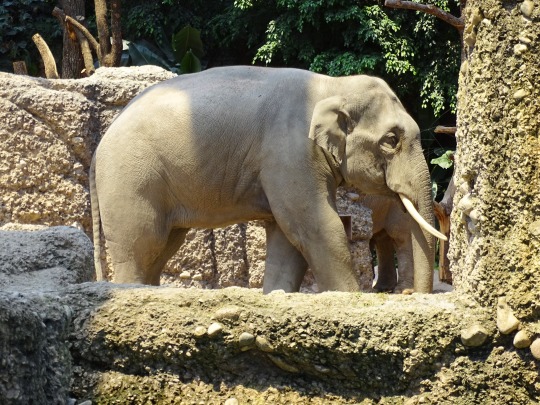
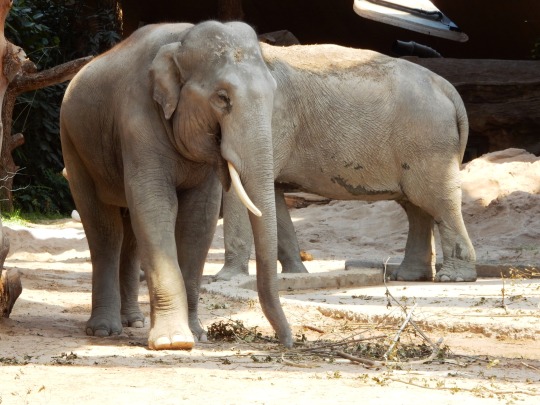




National Elephant Appreciation Day
National Elephant Appreciation Day is celebrated on every year on September 22. The Elephant is all the way a fascinated by all age groups. Adore the elephants as it is the largest land animal on this mother earth. Observe this day to educate the humankind that elephants are under the threat of extinction. Celebrating the National Elephant Appreciation Day is an honor for its characteristics, and it is also vital to bring awareness among the people about the plight of the terrestrial mammal.
“The elephant can survive only if forests survive.” – Mark Shand
History of National Elephant Appreciation Day
The origin and history of the National Elephant Appreciation Day date back to 1996. The day was established by Wayne Hepburn, the founder of Mission Media Inc. He commemorated this day once after his fascination for the elephant started after his daughter’s gift. The gift was a paperweight of elephants on parade which made him completely fascinated about the largest mammal kind of the planet. He began to read a large number of elephant books and other paraphernalia which kindled his interest towards celebrating such a day. Take some time to appreciate these lovely creatures. There are many interesting facts which make elephants different from other animals. Elephants are the large mammals of the family Elephantidae. They are living throughout the sub-Saharan Africa, South Asia and in Southeast Asia.
Elephants are profoundly intelligent animals with an average lifespan of about 60 to 70 years. They live in groups and will develop remarkably close family bonds. Elephants are extremely playful animals who love to play in the water. Elephants can play, laugh, cry, and show mirror self-recognition. They are herbivorous animals and eat plant from grass to trees. They are fond of bananas, cabbage, lettuce, apples, and other fruits and vegetables. It is important to note that elephants are facing innumerable threats as they are involved in the ivory trade as their ivory tusks are stolen. Deforestation, habitat destruction, and conflicts with local people are other threats faced by the elephants. So it is indeed important to take all the aspects in the notice and to help the elephants get out from the reaching the extinct state of living as the Asian elephant are classed as endangered.
How to Celebrate National Elephant Appreciation Day
The best way to celebrate the National Elephant Appreciation Day is by visiting the local zoo and observe its other characteristics alive. Research about the elephants and their living culture. Spread awareness about the plight of elephants to the people as to help elephants live a safer life.
Source
#Zoo Zürich#Zurich#day trip#Kaeng Krachan Elephant Park#architecture#indoors#Asiatic elephant#Asian elephant#tourist attraction#landmark#Switzerland#Schweiz#original photography#National Elephant Appreciation Day#NationalElephantAppreciationDay#22 September#animal#flora#fauna#travel
3 notes
·
View notes
Photo

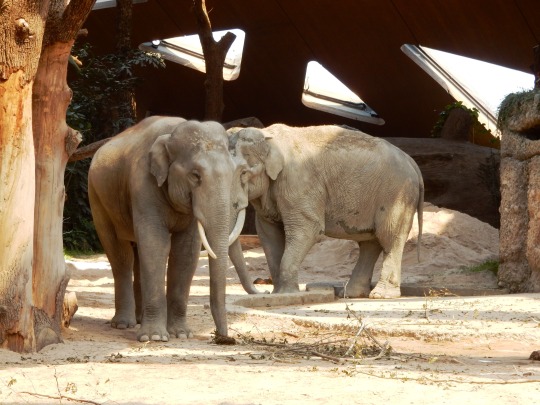
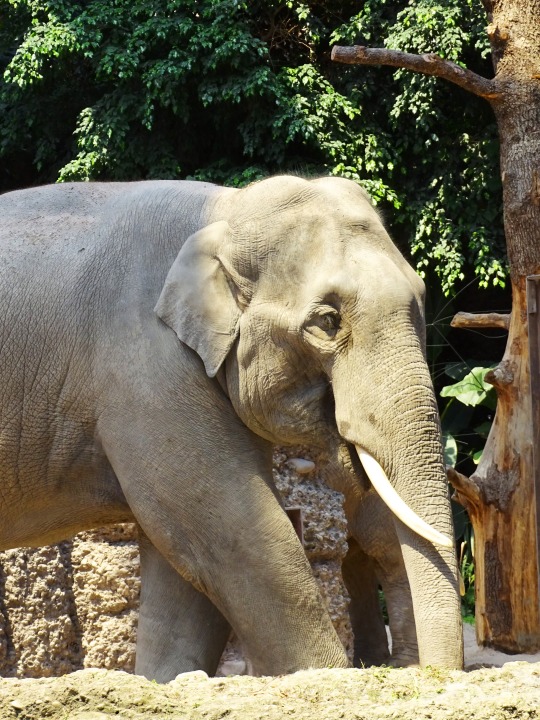
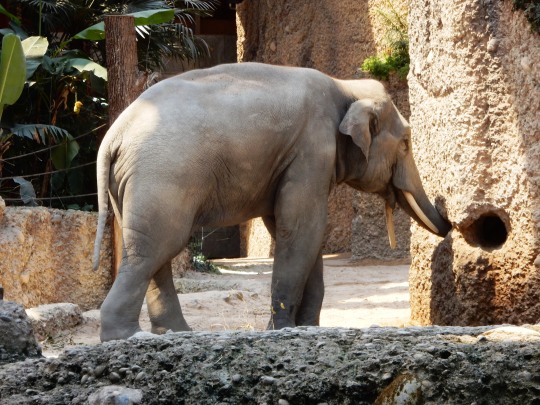

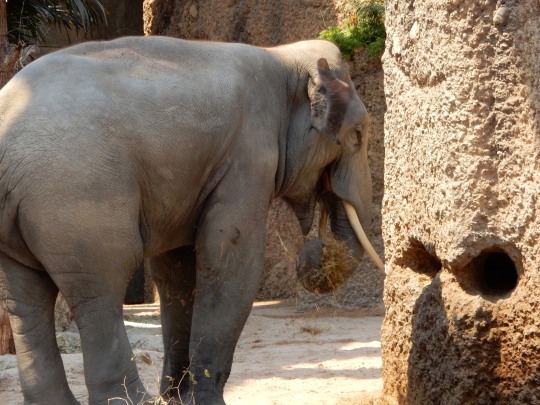
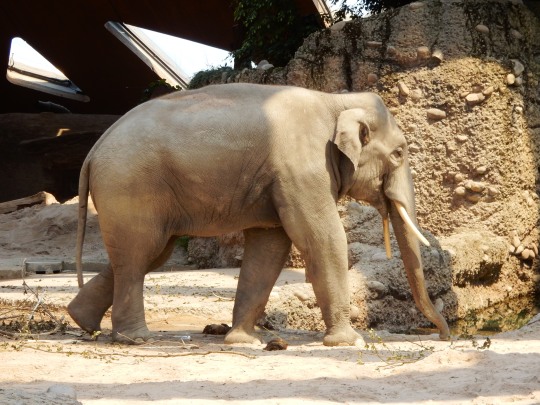
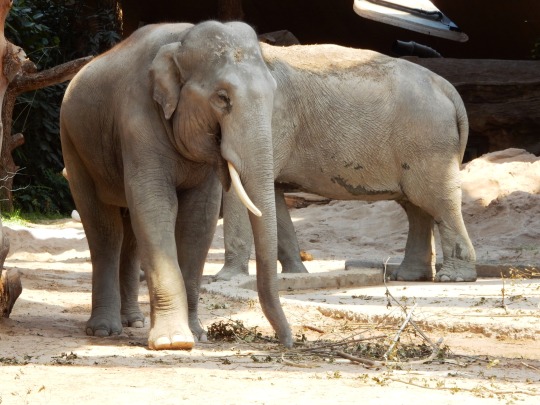

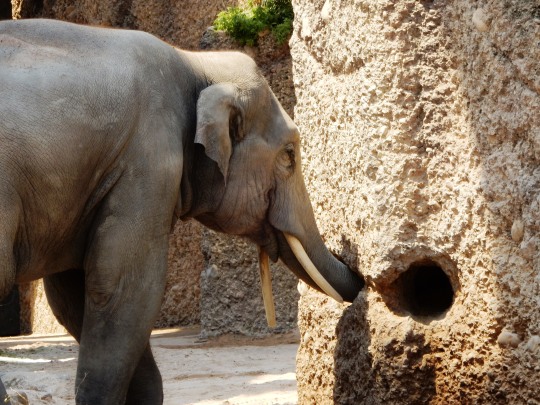
World Elephant Day
Personifying prehistoric beauty, theological relevance, and environmental importance, this August 12, we honor one of Earth’s most magnificent creatures with World Elephant Day. Over the last decade, the number of elephants has significantly dropped by 62% and they could be mostly extinct by the end of the next decade.
It is estimated that, every day, 100 African elephants are killed by poachers. The desire for ivory in Asian markets has led to the slaughter of thousands of elephants. World Elephant Day was created to raise awareness and create change to save these majestic creatures. Since its founding in 2012 by Patricia Sims and the Elephant Reintroduction Foundation of Thailand along with over 100 elephant conservation organizations worldwide, World Elephant Day has reached millions of individuals who love elephants and want to do whatever they can to help.
World Elephant Day is a day where organizations and individuals can rally together to give a voice to the issues threatening elephants.
This powerful, collective global movement offers a way to establish and endorse conservation solutions to make the world a safer place for elephants and their habitats so future generations can appreciate them.
Let’s combine all our efforts on August 12 for World Elephant Day 2021 to help preserve and safeguard elephants from the multiple threats they face.
History of World Elephant Day
Elephants and humans have come a long way together throughout the history of civilization. Thanks to the sheer expanse of the African elephant’s natural environment as well as its size and threatening posture, it has largely managed to resist captivity and domestication. The Asian elephant, on the other hand, which has lived alongside humans for over 4,000 years, enjoys great respect and is associated with a variety of cultural and spiritual customs. In Thailand, for example, the elephants are a national icon with a national holiday dedicated entirely to them and they can even receive a royal title from the king.
Despite all of the above, there is still a lot we don’t know about elephants. They have the biggest brain of any land animal, which makes them clever, conscious, social, and empathetic — qualities we humans strive for in ourselves. Humans and elephants share many characteristics and they are possibly more like us than any other animal. But we are putting their future in jeopardy and threatening their essential biodiverse habitats throughout Asia and Africa.
Elephants are a keystone species for their environments since they promote healthy ecosystems and encourage biodiversity. As the World Elephant Day website says, “To lose the elephant is to lose an environmental caretaker and an animal from which we have much to learn.”
We can save elephants by enforcing stronger local- and international protection policies and legislation for wild elephants against poaching and the illegal trade of ivory, promoting better management of their natural habitats, educating people on the vital role of the elephant in ecosystems, improving the way elephants in captivity are treated, and, if necessary, reintroducing captive elephants into wildlife reserves to allow a natural replenishing of endangered populations. These are just some of the aims of various elephant conservation organizations around the world.
Elephants are running out of space and time. We have to work together to prevent senseless poaching and the trafficking of ivory, and establish protected natural sanctuaries in which elephants and other wildlife can thrive — before it’s too late and they’re all gone.
World Elephant Day timeline
279 B.C. Armed Elephants
The Greek general Pyrrhus attempts to restore Alexander the Great’s empire by invading southern Italy with an army that includes 20 armed and armored elephants.
218 B.C. Surviving Elephants
Famous Carthaginian general Hannibal leads a cavalry of 37 elephants across the Alps — Surus, the only elephant to survive, becomes his mount for 15 years.
801 A.D. Arabian Elephant
A Jewish trader named Isaac is sent by Charlamagne to procure an elephant who would later be immortalized in many of the “Arabian Nights” stories.
1885 Jumbo the Elephant
Jumbo, circus owner P.T. Barnum’s famed elephant that he purchased in France, is struck and killed in a rail-yard accident — Barnum continued making handsome profits off exhibiting the elephant’s skeleton.
1903 Edison Kills Elephant
The Edison Manufacturing Company films the public electrocution of an elephant named Topsy conducted by General Electric.
1916 Murderous Mary
An elephant by the name of Mary who crushed her ill-equipped assistant trainer after poking her in an infection is hung by the neck for murder.
HOW TO OBSERVE WORLD ELEPHANT DAY 2021
Donate!
Participate
Educate yourself
Donate to the World Elephant Society or the Elephant Reintroduction Foundation, which focuses on restoring natural habitats, changing legislation, and the rehabilitation of these animals.
Inform other people about what is happening to elephants, get your friends to sign a pledge, or share your love and concern for elephants with a hashtag #WorldElephantDay or #WorldElephantDay2021
Learn about what others are doing to conserve and protect elephants. Support efforts to treat and care for these magnificent creatures in non-exploitive and sustainable environments where they can thrive. And join World Elephant Day’s list of elephant supporters.
5 FUN FACTS ABOUT ELEPHANTS
Their tusks are teeth
They eat a Lot
Endangered elephants
Threatened elephants
Missing elephants
Elephant tusks are actually enlarged incisor teeth that first appear when elephants are around two years old.
Elephants need up to 150 kg of food per day — that equals about 150 bags of chips!
The Asian elephant is an endangered species with less than 40,000 remaining worldwide.
The African elephant is threatened with less than 400,000 remaining worldwide.
There were over 100,000 elephants in Thailand at the beginning of the last century — today, there are less than 4,000.
Why World Elephant Day is Important
We love elephants
They’re crucial to the environment
We don’t know much about them
Humans haven’t been very kind to elephants throughout history, despite all they’ve done for us. They are intelligent, loving, and mysterious creatures that should be preserved.
Elephants are a keystone species, which means they create and maintain the ecosystems in which they live and make it possible for a myriad of plant and animal species to live in those environments as well. The loss of elephants gravely affects many species that depend on elephant-maintained ecosystems and causes major habitat chaos and a weakening to the structure and diversity of nature itself.
Elephants have the largest brains of any living mammal on Earth. We still have a lot to learn from them and we can’t do that if they are all extinct.
Source
#Kaeng Krachan Elefantenpark#Kaeng Krachan Elephant Park#Asian elephant#Asiatic elephant#Zoo Zürich#Zurich#Schweiz#daytrip#flora#fauna#tourist attraction#landmark#animal#Switzerland#spring 2018#2017#World Elephant Day#WorldElephantDay#12 August#international day#eating
2 notes
·
View notes
Photo










Save The Elephant Day
Volunteer or donate to Save an Elephant, and help preserve these majestic, intelligent, and of course giant threatened creatures that shape our ecosystems.
Elephants are known as the most enormous land animal and a surprisingly gentle giant in the animal kingdom. Emotional, intelligent and beautiful in the wild, sadly elephant populations have been rapidly decreasing due to various threats, perhaps most significantly poaching.
Save The Elephant Day aims to change this alarming trend by educating people about elephants and the plights they face, encouraging everyone to do their bit and help save them from extinction.
A brief education in elephants
There are currently three species of elephant spread across Africa and Asia: the African bush elephant, the African forest elephant and the Asian elephant. Characterized by their enormous size and highly adept trunks, these creatures are intelligent, social and largely gentle giants. They’ve been shown to display a range of emotions such as joy, anger and grief and live in complex social structures – matriarchal herds for the female cows and calves and a solitary lifestyle or bachelor herds for the male bulls.
Elephants are highly communicative animals, producing various noises including infrasonic, creating seismic vibrations over long distances and greeting each other through touch. Their impressive trunks provide them with an excellent sense of smell, a handy snorkel when swimming and even a delicate nutcracker.
History of Save The Elephant Day
Elephants are what is known as a keystone species due to their effect on their environment and the flora and fauna around them. Their size and strength allow them to shape the habitats they live in, for example by digging new watering holes. They are also vital for spreading seeds, facilitating the reproduction of various plant and tree species.
They have also long been valued in human culture, admired for their wisdom, strength and sociable natures. They have commonly featured in architecture, whether engravings on cave walls, sculptures in Buddhist temples or stone carvings on Gothic churches. They have also been revered in various world religions, believed to house the souls of ancestors and linked with thunder and lightning, for example. Perhaps the best-known example is the Hindu god Ganesha, who is depicted as having the head of an elephant.
Elephants are frequently used as working animals in Asia, with people drawing on their incredible strength to carry heavy loads in construction projects or provide a mode of transport. In ancient times they were even used in various wars.
Yet despite our affinity with and indebtedness to these amazing animals, our treatment of them has sadly led to a decline in numbers and a proliferation of abused and exploited elephants. The main culprit in population decline is the ivory trade – although it has largely been banned since the late 1980s, illegal poaching continues to this day, with one African elephant killed every 30 minutes for its tusks.
Other threats to the elephant include habitat loss and fragmentation, usually caused by increased urbanization, and conflicts with humans over crops. There are also numerous instances of maltreated and neglected elephants in captivity, for example those used in circuses or as tourist attractions.
Sadly, African bush elephants and Asian elephants are both listed as an endangered species by the International Union for Conservation of Nature (IUCN), while African forest elephants are classed as critically endangered, with their population rapidly declining.
While these facts are certainly sobering, all hope is not lost! Various organizations are working hard to increase the number of wild elephants and to rehabilitate those rescued from unpleasant circumstances. And real change is possible – lobbying efforts recently induced China, previously the biggest ivory market globally, to ban the trade in 2018, helping reduce the threat to elephants.
To celebrate Save The Elephant Day, people learn about the awesome elephant and make an effort to improve the worrying statistics regarding their numbers by donating to conservation organizations. Together we can work to protect these precious creatures, and that’s what Save The Elephant Day is all about!
How to celebrate Save The Elephant Day
One of the best ways to celebrate Save The Elephant Day is to support or even volunteer for an organization that focuses its efforts on the conservation of these creatures, for example by helping to prevent poachers from killing elephants for their ivory tusks. Organizations such as the World Wide Fund for Nature (WWF), Fauna & Flora International (FFI) and the Elephant Crisis Fund (ECF) do a great job protecting these creatures and there are plenty of ways you can get involved, for example by adopting an elephant for yourself or a loved one.
You can even save up some money and take a trip to an animal sanctuary that cares for elephants. These projects can help with the rehabilitation of abused animals that have been rescued from exploitation, as well as with the housing of wild elephants that are sick or orphaned. You could also go and see some elephants in the wild by visiting Africa or Asia.
Save The Elephant Day is all about raising awareness, so take the time to learn more about these creatures by researching facts about the elephant, and then take an active effort in educating other people. For example, you could post flyers, share information on social media and show your support for the elephant through events and fundraisers.
There are plenty of ways you could help raise funds for elephant conservation. How about a themed bake sale or a ‘pin the tail on the elephant’ contest? Why not try auctioning off some elephant artwork or other memorabilia? Or you could organize an ‘elephant walk’ and compete to see who can plod their way the farthest! Whatever you do to celebrate, be sure to share this important day with your friends, family neighbors and colleagues and help save the elephants together!
Source
#Kaeng Krachan Elefantenpark#Kaeng Krachan Elephant Park#Zoo Zürich#Asiatic elephant#Asian elephant#Elephas maximus#Save The Elephant Day#SaveTheElephantDay#16 April#Zurich#Schweiz#Switzerland#day trip#spring 2018#2017#flora#fauna#animal#original photography#indoors#tourist attraction#landmark#architecture
2 notes
·
View notes
Photo










World Elephant Day
They’re intelligent. They’re family-oriented. They have great memories. They are capable of feeling a wide range of deep emotions, from intense grief to joy bordering on elation, as well as empathy and stunning self-awareness. They create complex, supportive societies much like our own. Taking into consideration all of that and much, much more, what’s not to love about elephants? Still, countless elephants are brutally killed every year for their ivory by greedy poachers who then leave their carcasses to rot in the sun. As Graydon Carter, Editor of Vanity Fair, put it:
We admire elephants in part because they demonstrate what we consider the finest human traits (…) but the way we treat them puts on display the very worst of human behavior.
World Elephant Day is the perfect time to find out more about these amazing animals and what we can do to preserve and protect them so they do not go the way of the mammoth.
History of World Elephant Day
World Elephant Day was created in 2011 by two Canadian filmmaker Patricia Sims and Thailand’s Elephant Reintroduction Foundation and first celebrated on August 12, 2012. The initiative was greatly supported by film star William Shatner who narrated the documentary Return to the Forest, a fascinating 30-minute film about the reintroduction of captive Asian elephants to the wild.
Currently, the demand for ivory is the biggest in China, with the price of ivory often exceeding the price of gold, something that makes elephants bigger targets than ever. Habitation loss is also a danger to the world’s elephant population as it deprives elephants of the hundreds of pounds of food they need every day, making it more difficult for them to breed and making it easier for poachers to track them down. Circuses and tourism are also serious threats to the animals’ well-being.
Luckily, an increasing number of both celebrities and politicians have become interested in the cause, including Leonardo DiCaprio, Ashley Judd and President Barack Obama.
How to Celebrate World Elephant Day
The best way to celebrate this day is to take the opportunity to educate yourself about these magnificent mammals and share your knowledge with others. As ever, simply spreading the word about the dangers these magnificent mammals face via social media can actually make a real change.
Thanks to your sharing a few of World Elephant Day’s Facebook posts, that old high school acquaintance of yours who is traveling to Thailand on her honeymoon this year may just decide to skip the elephant ride when she realizes that “training” elephants often involves tying and beating them daily for months on end.
Watching the aforementioned documentary will only take half an hour of your time but is sure to be a real eye-opener, not to mention the absolutely stunning landscapes shown in it. If you want to get a bit more involved, you could choose to make a donation to a foundation dedicated to protecting elephants from poachers or relocating them to locations better suited to their needs.
Whichever way suits you best, make sure that you spend this day in a way that helps elephants the world over so we, in turn, can continue to marvel at them and their uniquely fascinating way of life.
Source
#Kaeng Krachan elephant park#Zoo Zürich#Zurich#Asian Elephant#animal#nature#flora#fauna#interior#daytrip#World Elephant Day#12 August#WorldElephantDay#Switzerland#Schweiz#original photography#detail#Asiatic elephant#Elephas maximus#close up#eating#summer 2017#2018#tourist attraction#landmark#architecture
9 notes
·
View notes
Photo










National Elephant Appreciation Day
National Elephant Appreciation Day is celebrated on every year on September 22. The Elephant is all the way a fascinated by all age groups. Adore the elephants as it is the largest land animal on this mother earth. Observe this day to educate the humankind that elephants are under the threat of extinction. Celebrating the National Elephant Appreciation Day is an honor for its characteristics, and it is also vital to bring awareness among the people about the plight of the terrestrial mammal.
“The elephant can survive only if forests survive.” – Mark Shand
History of National Elephant Appreciation Day
The origin and history of the National Elephant Appreciation Day date back to 1996. The day was established by Wayne Hepburn, the founder of Mission Media Inc. He commemorated this day once after his fascination for the elephant started after his daughter’s gift. The gift was a paperweight of elephants on parade which made him completely fascinated about the largest mammal kind of the planet. He began to read a large number of elephant books and other paraphernalia which kindled his interest towards celebrating such a day. Take some time to appreciate these lovely creatures. There are many interesting facts which make elephants different from other animals. Elephants are the large mammals of the family Elephantidae. They are living throughout the sub-Saharan Africa, South Asia and in Southeast Asia.
Elephants are profoundly intelligent animals with an average lifespan of about 60 to 70 years. They live in groups and will develop remarkably close family bonds. Elephants are extremely playful animals who love to play in the water. Elephants can play, laugh, cry, and show mirror self-recognition. They are herbivorous animals and eat plant from grass to trees. They are fond of bananas, cabbage, lettuce, apples, and other fruits and vegetables. It is important to note that elephants are facing innumerable threats as they are involved in the ivory trade as their ivory tusks are stolen. Deforestation, habitat destruction, and conflicts with local people are other threats faced by the elephants. So it is indeed important to take all the aspects in the notice and to help the elephants get out from the reaching the extinct state of living as the Asian elephant are classed as endangered.
How to Celebrate National Elephant Appreciation Day
The best way to celebrate the National Elephant Appreciation Day is by visiting the local zoo and observe its other characteristics alive. Research about the elephants and their living culture. Spread awareness about the plight of elephants to the people as to help elephants live a safer life.
Source
#National Elephant Appreciation Day#NationalElephantAppreciationDay#Zürich#Zoo Zurich#daytrip#22 September#animal#nature#indoors#architecture#Kaeng Krachan Elephant Park#flora#fauna#eating#original photography#close up#landmark#tourist attraction#Asian elephant#Asiatic elephant#Elephas maximus#Switzerland#Schweiz
6 notes
·
View notes